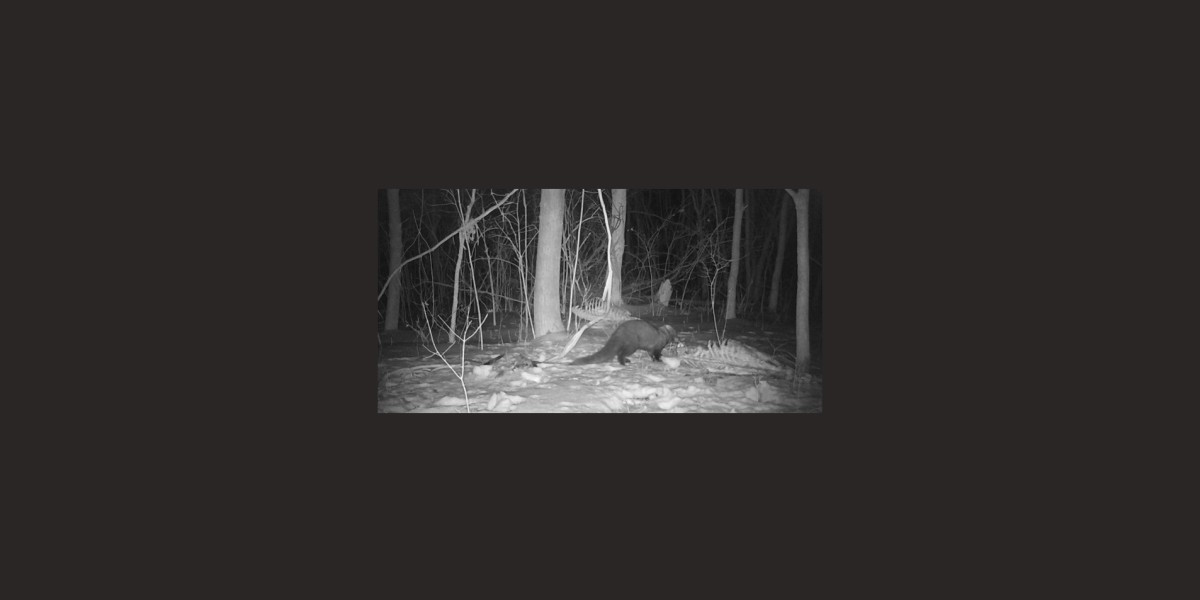Lead (Pb) is a heavy metal that doesn't offer any clear biological benefits and is harmful to both wildlife and humans. Even though lead has been banned in various consumer products, it is not currently regulated in ammunition used for big-game hunting (such as cervids) in New York State. Wildlife that feed on the remains of animals harvested with lead ammunition can be at risk of ingesting bullet fragments and suffering from toxicosis. To make informed decisions on reducing the danger of lead ammunition, we collaborated with the New York State Department of Environmental Conservation to identify avian and mammalian scavengers of white-tailed deer carcasses in New York using publicly submitted images of scavengers captured by game cameras. Utilizing existing frameworks and published evidence, we assessed the vulnerability and usefulness of various species as bioindicators of lead in white-tailed deer and published our results in a new paper.
Despite some limitations, we were able to identify a wide range of avian (17 species) and mammalian (14 species) scavengers. Our findings indicated that bald eagles and golden eagles are at the highest risk of Pb toxicosis, followed by American goshawks, American crows, and common ravens. Bald eagles were also identified as the most suitable bioindicators of Pb from bullets, with American goshawks coming in next. Red-tailed hawks and great-horned owls shared the third spot. The combined assessment of vulnerability and usefulness pointed to bald eagles as the scavengers most vulnerable to Pb toxicosis and the best bioindicators of bullet-derived Pb.
As the regulation of Pb ammunition in big-game hunting continues to be a social and political issue, wildlife managers and conservationists can mitigate health risks by monitoring species susceptible to toxicosis and implementing surveillance programs using effective bioindicator species.
Our research on wildlife species that feed on white-tailed deer carcasses can help investigators identify which animals might be negatively affected by lead from bullets in New York and neighboring states. We offer guidance to wildlife managers on prioritizing vulnerable species and selecting bioindicator species for monitoring. Given the challenges in regulating lead ammunition in big-game hunting, a practical approach for wildlife management is to focus on surveillance of lead exposure in bioindicator species to benefit species in need of targeted conservation efforts.
The full article can be found here:
Eleftheriou, A., Hynes, K., Clark, M., & Schuler, K. Vulnerability to lead toxicosis and bioindicator utility of deer scavengers in New York. The Journal of Wildlife Management, e22641. https://doi.org/10.1002/jwmg.22641
Did you know there is a non-lead ammo rebate program in NYS?
The Non-lead Ammo Rebates for Eagle Conservation Program is back and offering rebates (up to $60) to hunters to use certified non-lead ammo during the 2024-25 deer hunting season. The goal of the project is to determine how the use of non-lead ammo during the deer hunting season can improve the health of bald and golden eagles in NY.
Hunters have an opportunity for hands-on conservation. Please visit Hunters for Eagle Conservation for more info. Please contact DEC if you have any questions on the non-lead ammo study, email wildlife@dec.ny.gov.









